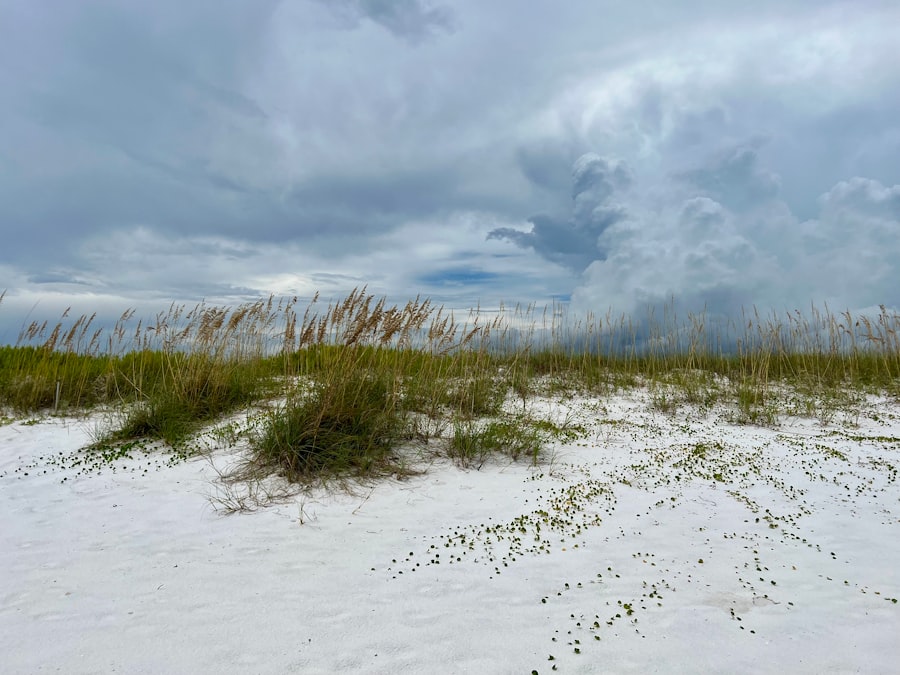Rediscovering Paradise: Boracay’s Timeless Allure
Description
Boracay, a small island in the Philippines, has long been celebrated as a tropical paradise, drawing visitors from around the globe with its powdery white sands and crystal-clear waters. The island’s allure began to rise in the 1970s when it was relatively undiscovered, attracting adventurous travelers seeking an idyllic escape. As word spread about its breathtaking beauty, Boracay transformed into a bustling tourist destination, with resorts, bars, and restaurants sprouting up to accommodate the influx of visitors.
The island became synonymous with leisure and luxury, offering a vibrant atmosphere that appealed to both backpackers and affluent tourists alike. However, this rapid development came at a cost. By the early 2000s, Boracay faced significant environmental challenges due to over-tourism.
The once-pristine beaches became littered with waste, and the delicate ecosystem suffered from the strain of excessive foot traffic and inadequate infrastructure. The island’s charm began to wane as the very elements that made it special were threatened. Reports of pollution, overcrowding, and the degradation of natural resources painted a grim picture of Boracay’s future.
The island’s reputation as a paradise was tarnished, prompting urgent calls for intervention to restore its former glory.
Key Takeaways
- Boracay’s allure rose with its pristine beaches and vibrant nightlife, but fell due to overdevelopment and environmental degradation.
- The new era of rehabilitating Boracay focuses on sustainable tourism and preserving its natural beauty.
- Despite its ups and downs, Boracay’s beaches continue to exude timeless charm and attract tourists from around the world.
- Rediscovering Boracay’s natural beauty involves promoting eco-friendly activities and preserving its marine life and biodiversity.
- Boracay’s eclectic dining scene offers a wide range of culinary experiences, from local delicacies to international cuisine, catering to diverse tastes.
A New Era: Rehabilitating Boracay
In April 2018, the Philippine government took decisive action to address the environmental crisis plaguing Boracay by temporarily closing the island to tourists for six months. This unprecedented move aimed to rehabilitate the island’s ecosystems and infrastructure, allowing for a much-needed reset. During this period, extensive efforts were made to clean up the beaches, improve waste management systems, and enforce stricter regulations on construction and tourism activities.
The closure was met with mixed reactions; while many locals and environmentalists applauded the initiative, business owners expressed concern over the economic impact of losing peak tourist season. The rehabilitation efforts were comprehensive and multifaceted. Authorities implemented a series of measures designed to restore Boracay’s natural beauty while ensuring sustainable tourism practices for the future.
This included the establishment of designated swimming areas, improved sewage systems, and stricter zoning laws to prevent further overdevelopment.
As a result, Boracay began to emerge from its rehabilitation phase with renewed vigor, showcasing a commitment to preserving its unique environment while still catering to the needs of tourists.
The Timeless Charm of Boracay’s Beaches

Boracay’s beaches are undoubtedly its crown jewels, each offering a unique experience that captivates visitors. White Beach, often hailed as one of the best beaches in the world, stretches for over four kilometers and is lined with palm trees swaying gently in the breeze. Its powdery white sand is composed of finely crushed coral, making it soft underfoot and perfect for sunbathing or leisurely strolls along the shore.
The beach is divided into several stations, each catering to different types of travelers—from lively bars and water sports at Station 2 to quieter spots ideal for relaxation at Station 1. Beyond White Beach, other hidden gems await discovery. Puka Shell Beach, located on the northern tip of the island, offers a more tranquil atmosphere with its stunning views and fewer crowds.
Named after the puka shells that adorn its shores, this beach is perfect for those seeking solitude or a romantic getaway. Meanwhile, Bulabog Beach on the eastern side is renowned for its windsurfing and kitesurfing opportunities, attracting adventure enthusiasts eager to ride the waves. Each beach on Boracay tells its own story, contributing to the island’s diverse appeal and timeless charm.
Rediscovering Boracay’s Natural Beauty
| Metrics | Data |
|---|---|
| Number of Tourists | Decreased by 85% after rehabilitation |
| Beach Clean-up | Removed 195 tons of debris |
| Marine Life | Increased by 50% due to coral restoration |
| Water Quality | Improved by 60% after sewage system upgrade |
The rehabilitation efforts in Boracay have not only focused on restoring its beaches but also on revitalizing its lush landscapes and rich biodiversity. The island is home to various ecosystems, including mangroves, coral reefs, and tropical forests that provide habitat for numerous species of flora and fauna. As part of the rehabilitation initiative, local authorities have prioritized reforestation projects aimed at restoring native vegetation and enhancing wildlife habitats.
These efforts are crucial in maintaining ecological balance and ensuring that Boracay remains a haven for both visitors and wildlife. In addition to reforestation, initiatives have been launched to protect Boracay’s marine life. The establishment of marine protected areas has become essential in safeguarding coral reefs from damage caused by tourism activities such as snorkeling and diving.
By rediscovering and preserving Boracay’s natural beauty, stakeholders are not only enhancing the island’s appeal but also fostering a deeper appreciation for its ecological significance.
Exploring Boracay’s Eclectic Dining Scene
Boracay’s dining scene is as diverse as its visitors, offering an array of culinary experiences that reflect both local flavors and international influences. From beachfront shacks serving fresh seafood to upscale restaurants offering gourmet cuisine, there is something to satisfy every palate. One cannot visit Boracay without indulging in its famous grilled seafood—freshly caught fish, prawns, and squid are often prepared right before your eyes at local eateries along White Beach.
For those seeking a taste of local culture, traditional Filipino dishes such as adobo and sinigang can be found in various establishments across the island. Many restaurants pride themselves on using locally sourced ingredients, ensuring that diners experience authentic flavors while supporting local farmers and fishermen. Additionally, Boracay has embraced global culinary trends, with options ranging from Italian trattorias to Japanese sushi bars.
This eclectic mix not only caters to diverse tastes but also reflects the island’s cosmopolitan nature as it continues to attract visitors from all corners of the world.
The Thriving Nightlife of Boracay

Vibrant Nightlife Options
The nightlife scene in Boracay is renowned for its variety; whether one prefers laid-back beach lounges or high-energy clubs featuring international DJs, there is no shortage of options.
Happy Hour and Lively Atmosphere
One of the most iconic nightlife experiences in Boracay is the famous “Happy Hour,” where bars offer enticing drink specials that draw crowds eager to socialize and unwind after a day in the sun. Station 2 is particularly known for its lively atmosphere, with establishments like Epic and Club Paraw hosting themed parties that attract both locals and tourists alike.
Relaxed Evening Options
For those seeking a more relaxed evening, beachfront bonfires provide an intimate setting for friends to gather under the stars while enjoying live acoustic performances. This dynamic nightlife scene contributes significantly to Boracay’s reputation as a premier destination for both relaxation and revelry.
Sustainable Tourism in Boracay
The push for sustainable tourism in Boracay has gained momentum in recent years as stakeholders recognize the importance of balancing economic growth with environmental preservation. With tourism being a primary driver of the local economy, it is essential to implement practices that minimize negative impacts on the environment while maximizing benefits for local communities. Initiatives such as eco-friendly accommodations and responsible tour operators have emerged as part of this movement toward sustainability.
Many resorts now prioritize sustainable practices by utilizing renewable energy sources, implementing waste reduction strategies, and promoting conservation efforts among guests. For instance, some establishments have adopted zero-waste policies or offer incentives for guests who participate in beach clean-up activities. Additionally, local government units have begun enforcing regulations that limit tourist numbers during peak seasons to prevent overcrowding and protect natural resources.
By embracing sustainable tourism practices, Boracay aims to ensure that future generations can continue to enjoy its beauty while preserving its unique ecosystems.
Preserving Boracay’s Cultural Heritage
While Boracay is often celebrated for its stunning landscapes and vibrant nightlife, it is equally important to recognize and preserve its rich cultural heritage. The island is home to indigenous communities whose traditions and customs have shaped its identity over centuries. Efforts are being made to promote cultural awareness among visitors through various initiatives that highlight local arts, crafts, and traditions.
Local artisans play a vital role in preserving Boracay’s cultural heritage by creating handmade crafts that reflect their unique artistry. From intricate woven products to traditional jewelry made from indigenous materials, these crafts not only provide economic opportunities for local communities but also serve as tangible representations of their cultural identity. Additionally, cultural festivals celebrating local traditions are organized throughout the year, allowing visitors to engage with the island’s history while fostering respect for its diverse heritage.
In conclusion, Boracay stands at a crossroads where its natural beauty meets cultural richness amidst ongoing efforts toward sustainability and rehabilitation. As it continues to evolve as a premier tourist destination, there remains an opportunity for all stakeholders—locals, tourists, and government officials—to work collaboratively in preserving what makes this island truly special for generations to come.
If you’re planning a trip to Boracay, you may want to check out this article on WhatsApp Messenger. Staying connected with friends and family while on vacation is important, and WhatsApp Messenger is a popular app for messaging and calling loved ones back home. It’s always good to have a reliable way to communicate, especially when exploring a beautiful destination like Boracay.
FAQs
What is Boracay?
Boracay is a small island in the Philippines known for its beautiful white sand beaches and crystal clear waters. It is a popular tourist destination for its stunning natural beauty and vibrant nightlife.
What are the popular activities in Boracay?
Some popular activities in Boracay include swimming, snorkeling, scuba diving, kite surfing, and island hopping. The island also offers a variety of restaurants, bars, and shops for visitors to enjoy.
When is the best time to visit Boracay?
The best time to visit Boracay is during the dry season, which typically runs from November to April. This is when the weather is most pleasant and the waters are calm, making it ideal for beach activities.
Is Boracay family-friendly?
Yes, Boracay is a family-friendly destination with plenty of activities and accommodations suitable for families. The island offers a range of options for visitors of all ages, including kid-friendly beaches and resorts.
Are there any environmental regulations in Boracay?
Yes, in 2018, the Philippine government closed Boracay for six months to undertake major environmental rehabilitation efforts. Since then, the island has implemented strict regulations to protect its natural resources, including limits on the number of visitors and activities allowed on the island.





